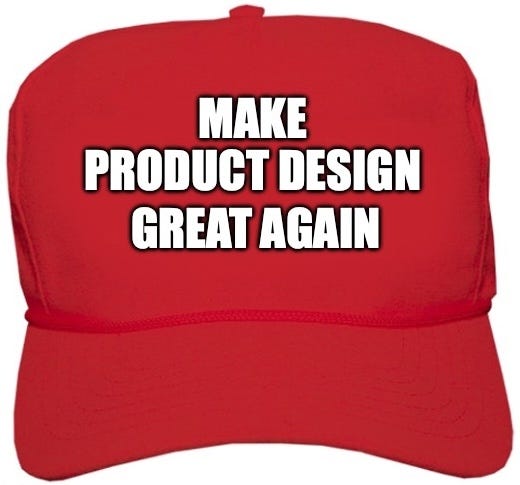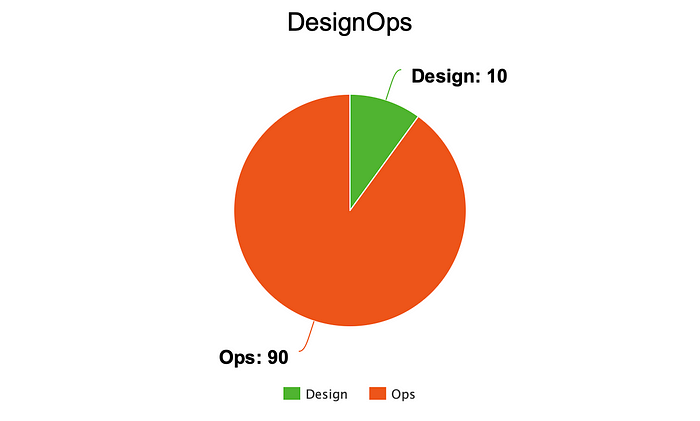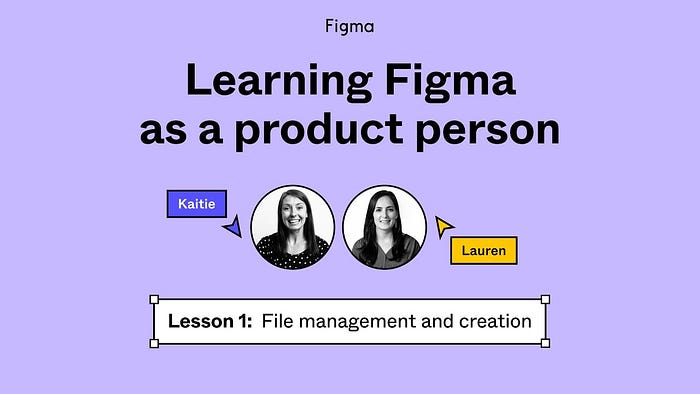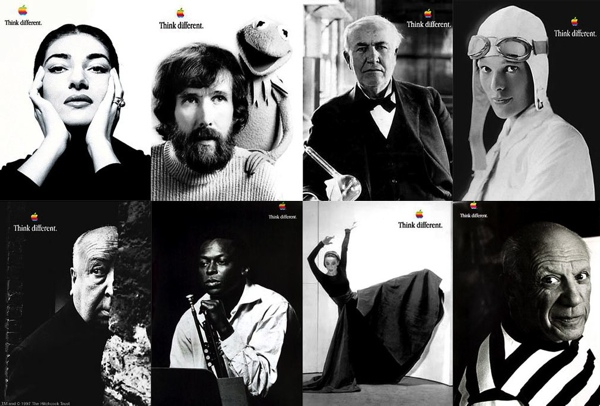

Make Product Design Great Again
source link: https://uxdesign.cc/make-product-design-great-again-c7b505c56983
Go to the source link to view the article. You can view the picture content, updated content and better typesetting reading experience. If the link is broken, please click the button below to view the snapshot at that time.
Make Product Design Great Again
UXA! UXA!

Yeah I got some hats made for this one
TL:DR; Digital Product Design is reaching the midpoint in its lifespan, and has become predicable, depressed, flabby and suffering the inevitable crisis that I promise I’m not projecting. Ok maybe a bit but hear me out…

I do the best Product Design. YUGE X!
Sprint zero. Blurgh.
I LOVE digital product design. It’s my vocational happy home.
The trouble now is that home used to be a lovely, quaint country cottage, but now it’s a terraced two-bedroom sub-cromulent sh*tbox on a newly built estate. Designed by committee, to be built quickly, cheaply, and project-managed to the second, and totally devoid of any charm or personality.

This is like the UX ketchup bottle meme but way more offensive
And that is how I feel about modern digital product design. Everything looks the same, bland and boring, it seems like it’s all come from the same templated framework (because it has), and although it’s important that the patterns need to be consistent, it lacks the creativity and individuality that is sorely needed in experience design. Why is everything so ‘samey’? Where is the creative diversity in digital design?
As usual, I will attempt to research the problem and provide a satirical solution, the usual caveats apply, if you are easily offended or work in HR then please click here.
Sprint one: Design Recruitment
Design recruitment agencies are struggling as they need to turn tenuous briefs into strong candidates. I respect that, and I regret previously opining that the design recruitment industry needs a reset. Or that the design industry is crying for a new recruitment model. Or that currently design recruitment is a dumpster fire (sorry).

Design recruitment, yesterday. Possibly
But design recruitment is all over the place. And it’s not their fault. They are deftly managing some huge constraints:
Bad briefs
Design recruitment briefs are a dumpster fire (sorry) like what even is ‘pixel perfect’ or ‘Figma wizard’? Product design is not pixel perfect nor is it reduced to a set of tool proficiencies. I’d take a talented candidate who was a bit fiddly with Figma, over someone with average design skills but who names their layers and knows what boolean variables are. Remember, the user does not care how good you are at Figma.
Unicorn theory
The ‘Design Unicorn’ is a hugely attractive, yet brutally disappointing, false economy and fallacy, that tries to consolidate everything into one role. It's cheaper and less management overhead. But it yugely affects the quality and integrity of product design.
Unicorns don’t exist, that is the entire point. It’s a fictional horse with a waffle cone stuck to its forehead.
Companies are shoehorning 5 roles into one, to save money and to framework the design process into a product process. But design is NOT product, it has a different process and methodology.
Less money
Yeah, the cost of living crisis ain’t just macadamia nuts. It’s tough out there, and agencies and client side are tightening their belts. I feel sorry for recruiters, a lot of them losing their jobs and then set up their own thing which leads to:
Too many micro-recruitment companies
There’s two new ones every week, it becomes difficult to create a relationship. And these new ones are hungry and promise they will find you work. Like the first 24 hours on a dating app it feels like you are popular and theres tons of opportunities, then you realise you are just one in a stack of hopefuls, and your destiny is out of your hands.
Social media.
Social media is the worst thing to happen to humans ever. And it’s allowed recruiters to focus less on ACTUALLY placing people, and more to extending their reach, but also sharing their views on design. I am not gatekeeping, but unless you have worked on an actual digital transformation project, and shipped a thing, then be careful about giving design advice. Particularly portfolio advice. Or how designers should ‘show your process and thinking’. Designers should take portfolio device from other designers. We mentor our own. Also the proliferation of bad design takes and UX opinions on LinkedIn has got out of hand. It’s not just the ketchup bottle.

I done a photoshop
I clearly take product design way too seriously, and possibly fail to see the irony but I cringe to think that some client, product person or designer might see this digital detritus and think thats how UX designers see their craft.
Portfolio advice
The portfolio tells a personal story, if that person is not right for the job, thats fine, don’t make them change their whole ‘thing’ to get a job they were not destined to get. There is no such thing as a bad portfolio. Just tell your story and make sure the work shown is actually yours, and that you can explain what you did and how you made a difference. Bonus points for describing constraints and what failed and why. Shows character and integrity.
Sprint two: ‘DesignOps’
I’ve worked for some big corporations, and those with large DesignOps teams are struggling with the ‘design’ part. There are amazing at the ‘Ops’ part. In fact they are 95% Ops and 5% design. Why?

I done a graph
Product. DesignOps is how product see design. It’s not how design sees product.
“Let's make everything work around product”
Let's make systems and processes and make everything work like a good solid product team. This in theory sounds great, streamline the process to create less process. Again I see how this makes sense, but in reality good design does not work like product, it’s hardly even agile. It’s messy and unstable, it’s not a set of tasks, its sometimes organic and always emotional.
‘Product design’ nowadays is 95% product and 5% design. You can see where the issue lies now.

I done another graph.
Sprint three: Figma
Figma is an excellent tool for making rectangles. But it’s become way too much like a design project management tool. Collaboration is not about being in each other's working files. How are you supposed to design anything considered, when there are multiple non-design people making unsolicited changes and comments right inside your work? And DEV mode too? as if a simple handoff was not collaborative enough.

Why do product persons need to learn Figma?
Design does not happen alone. But it also doesn’t happen in a crowded room. The old saying ‘too many cooks spoil the broth’ is appropriate here.
Imagine if I jumped into github and refactored someone’s code, or rearranged the product backlog I’d get fired. Other than leaving some comments on a design I’d say it's simply way too intimate to expect to be moving my rectangles around.
Also there 10 ways to make stuff now. And ‘make’ it properly. It’s more about HOW you are making the Figma than WHAT you are actually creating. The value has shifted from the design to the design production. Maybe something is getting lost in the process.
Remember, the user does not care how good any of you are at Figma. It’s the integrity of the design that matters. They are never ever going to see how those sausages got made. They care about the design. Not the design production or the Design System.
It’s not code. If the code is bad, the user notices, as the service is slow and buggy. There is a tangible and measurable outcome to badly built code.
Sprint four: Generalists v Specialists
The famous Shakespeare quote “a jack of all trades is a master of none” is often used to bash a good general product designer. Personally I think being the best at everything you can is a great way to be a successful all-round designer.
But thats only half the phrase. The full phrase is “a jack of all trades is a master of none, but oftentimes better than a master of one.”
It was supposed to be a compliment. And for a lot of designers it is.
I don't need a researcher to be a ‘Figma Ninja’ or a ‘wireframe hero’. They are designed to be a master of one.
UX designer? well it’s great if they know some layout or colour theory, bit of testing? great. Secondary desk research? yes please.
Our industry needs to ask itself, is a Product Designer enough?
What even is a Product designer? Are we really saying this person does a bit of everything? A jack of all trades?
In over two decades of product design I will always go for specialists over generalists. Why?
In every industry there are multiple disciplines, and claiming to be an ‘all rounder’ is just a bit broad.
Nobody can do all the UX stuff themselves. Especially the research. And the testing? I’d take a specialist please.
Imagine a digital product as a house. The human that draws up the plans is not the same human that builds the bathroom. And the human that installs the underfloor heating ain’t the same as the human who does the roof. Theres a reason for this. Skillsets and specialisms. of course you can get a builder to do the lot, it’s cheaper, but it’s always at the expense of quality control. A cabinet maker will build you a kitchen. A builder will install you a kitchen. These are not the same.
Part of the issue now is that anybody can be a product designer, it’s become a catch-all term for anyone who can do some wireframes and create some journeys. Throw in a persona or two and bosh. Half the time that person is a ‘something else’ autodidact who did a boot camp. And thats cool if you have design chops but the rest of us are trying to survive in a field of cheap labour and bad rectangles.
Get some proper UX people. And no, ‘doing some wireframes’ is not UX, it’s just drawing grey rectangles.
The way to tell if a design department is legit is to look at their research.
Want to improve your product design? hire more researchers. Yeah it’s expensive but so is everything that really matters
Also spend some more money on a UI (visual design) person with a proper graphic design background.
Specialists are preferable to generalists in the context of a well rounded digital product design team. It’s more expensive and a greater management overhead, but it’s worth it IMO. The result is better design.
Sprint five: Design Systems
Yes I’m going there, as someone has to. I realise this wont make me popular, but I’ve never been popular. So…
I recently applied for some work at a FinTech and as a Lead Product Designer I would join a team of TEN humans solely working on ‘maintaining the design system’. And like every other one it was built on Atomic Design principles (which was itself based around an tenuous analogy, over 10 years ago) and had a cool name like ‘Supernova’ or ‘NuclearAlan’ or whatnot.
Since when did a company need to hire 10 people to run a pattern library (and it is a pattern library) and where is the ‘design’ part? This feels like design management. Is this DesignOps? Do you need designers for this? And at what point are you allowed to make new design?. Do you just take a bunch of pre-made templates and assemble them? Is that design? Sounds like product. And do they evolve?
A good design system is a comprehensive set of guidelines, principles, and tools that ensure consistency and efficiency in creating and maintaining digital products. It enables designers and developers to work collaboratively, effectively and efficiently, resulting in a better user experience. But is it making the design more predictable? Or is the templating and democratisation making everything a bit like a Lego set?
Design systems are great, and like AI, a natural questioning of their purpose and value does not equal a misunderstanding, but to me they exist to further make design more like product and engineering. Both are task based and rely heavily on frame worked processes and methods. And they don’t really require design skills.
Where are the people that are actually doing the design? Most companies are releasing digital products and the focus is on HOW they made it, there are 100 blog posts and podcasts on their methods, how they used process and tools to really push the boundaries. Their culture, how 50 people all love each other.
But if you actually use the product it’s a huge disappointment.
Again the user does not care about your story, they just want to use and buy products and services (stuff) with the least amount of friction. If we are putting the user first (and we better be) then the product needs to be better. It needs to be faster, less clutter, familiar and congruent.
Sprint six: Lets get back to basics
Make icons great again
Ok a quick nitpick, but first things first, who at Bumble is signing off on these icons?

Dear goodness it’s like clipart.com got drunk and made a Canva, inside a Powerpoint Excel.
When did we get to the point that even icons have to be standardised? Take a look at them, with no labels, and tell me what they are supposed to be (metaphor) and then the actual styling (craft). I get it’s subjective but is this really the best they can do?
I worked at Nokia in 2013 (AKA don’t mention the iPhone) and they had a guy whose sole job was to create beautiful and functional icons. He was great. Granted, Nokia is not the best example of innovation, but their icons were shit hot.
Celebrate diversity of roles
In creating the classic ‘Think Different’ campaign for Apple, Rob Siltanen, Lee Clow, and others pitched a poem which was initially hated by Steve Jobs. Like all pitches which the client initially hated, it went on to be super successful and a brilliant call to action for hiring designers:
Here’s to the crazy ones, the misfits, the rebels, the troublemakers, the round pegs in the square holes… the ones who see things differently — they’re not fond of rules… You can quote them, disagree with them, glorify or vilify them, but the only thing you can’t do is ignore them because they change things… they push the human race forward, and while some may see them as the crazy ones, we see genius, because the ones who are crazy enough to think that they can change the world, are the ones who do.

Heres to the crazy ones
A cross-functional design team needs to be a few different skills and knowledge. When you hire designers you need to hire with your heart, not via another framework driven process you read on LinkedIn ‘How I hire my design rockstars’ is just Medium tattle designed to help soft-launch someones coaching career side hustle (eurgh). And don’t get me started on design tasks, thats a surefire way to hire the wrong person. Get some edge cases and a few crazy ones. It’s what Steve Jobs did.
Take some risks
A/B testing exists to challenge your assumptions and test out cool new things. It’s not to work out which yellow CTA converts better (well it is, but thats boring)
Really REALLY put the user first
The user does not attend your standup, nor see your sprint retro, they don’t read your blogs on design (nor mine thank goodness) or read the case studies on your site. So why are we spending so much time on design management and process? Designers still aren’t getting a seat at the metaphorical table.
Are you really putting the user first? Or are you just keeping Product happy?. As 9 times out of ten a ‘good’ product designer gives product what they want, and makes the Figma work for the devs.
Stand up for design
The best Product Owners want you to challenge them, they want smart creative people in the room, and they need your help getting insights out of users and customers. They need you to be great at this.
Design is not making a tidy Figma. Or doing a Miro. Or even making a Pattern Library.
It’s understanding the problems to solve. It’s taking risks and making great products.
Sprint retrospective
Well lets look at what worked and what didn’t work:
What worked
I got all this off my chest
What didn’t work
My relationship with recruiters needs a design sprint.
Next steps
‘Making Product Design Great Again’ means falling back in love with design again, making time for the exploration, the craft and finesse. Less time in meetings, less time in JIRA, more conversations about design.
Thanks for reading!
p.s. If you like this sort of thing I also write about other stuff on my Substack x
Recommend
About Joyk
Aggregate valuable and interesting links.
Joyk means Joy of geeK